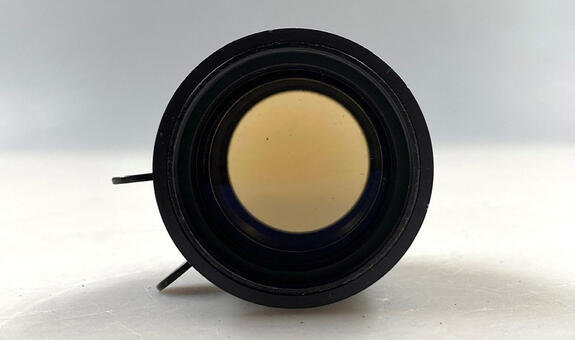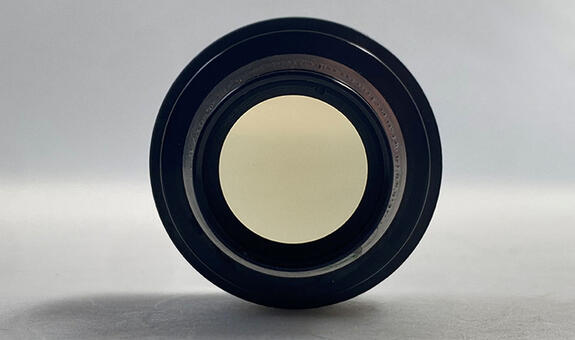How to de-yellow vintage optics
When dealing with vintage lenses, you may have heard of a ‘warm’ lens, one that stands out from the rest of the set. It is also described as yellowing, for quite an obvious reason too. If you were to hold one of these lenses up to a white sheet of paper and look through, it is obvious that the optical unit has at least a tint of yellow. It helps to look square through the lens with a gap between the front of the lens and the paper. This will help to eliminate any reflections that might bounce off the coatings of the lens and give a false colour. If the lens is particularly bad, it can appear almost brown in hue. However, it is not just the colour/temperature of the lens that is affected, this phenomenon directly alters the T-stop as well. Due to the darkened appearance of the optics, it does not allow as much light to pass through as it once did. The good news is, that for the most part, this process is reversable.
The reason behind the yellowness is due to a material that was used in the manufacture of certain glass types. This material is called thorium. It is a radioactive material and as it decays, it tints the glass with the yellow hue you see. Different glass types have different volumes of thorium in them, therefore some have a stronger discolouration than others. Although thorium is no longer used in modern day production, it is believed to be widely used until the 1970s.
The method to reverse this process is to bathe the effected element(s) in UV light until the colour returns to almost clear again. While it is possible to get some results by exposing the whole optical unit to the UV light, it is more efficient to disassemble the lens and treat the elements individually. Different wavelengths of UV light will also produce varying results. While this process can be very successful, it is unlikely that the complete lens will ever reach the widest T-stop when the lens was newly manufactured. This process can also take some time to get the optimum results, sometimes taking up to three weeks in the UV chamber.
The image here shows a Cooke Speed Panchro 75mm series II before the de-yellowing process, reading T2.86

The image here shows the results after the de-yellowing process, now reading T2.31

Once the de-yellowing process is complete, the lens can be re-assembled and checked on the T-scale bench to confirm the improvements. Some results have seen physical gains of more than half a T-stop! It is difficult to say how long these results will last as the process is still in its infancy. However, companies have been doing this process for several years now with no signs that the yellowing is beginning to return.
The most sensible time to have your optics de-yellowed is during a service or the rehousing process. During a service/rehousing will be the most cost-effective time as the lens will already be disassembled as part of the process. Furthermore, if you’re rehousing the lens, it is more pragmatic to de-yellow the optics during the process, so the T-scale reads accurately once the whole process is complete. If the lens is returned later for this process, the chances of needing a new iris scale are high.
If you’d like a quote or more information on our de-yellowing process, please get in touch with us at sales@truelens.co.uk or calling our office on +44 (0)1455 848411.







